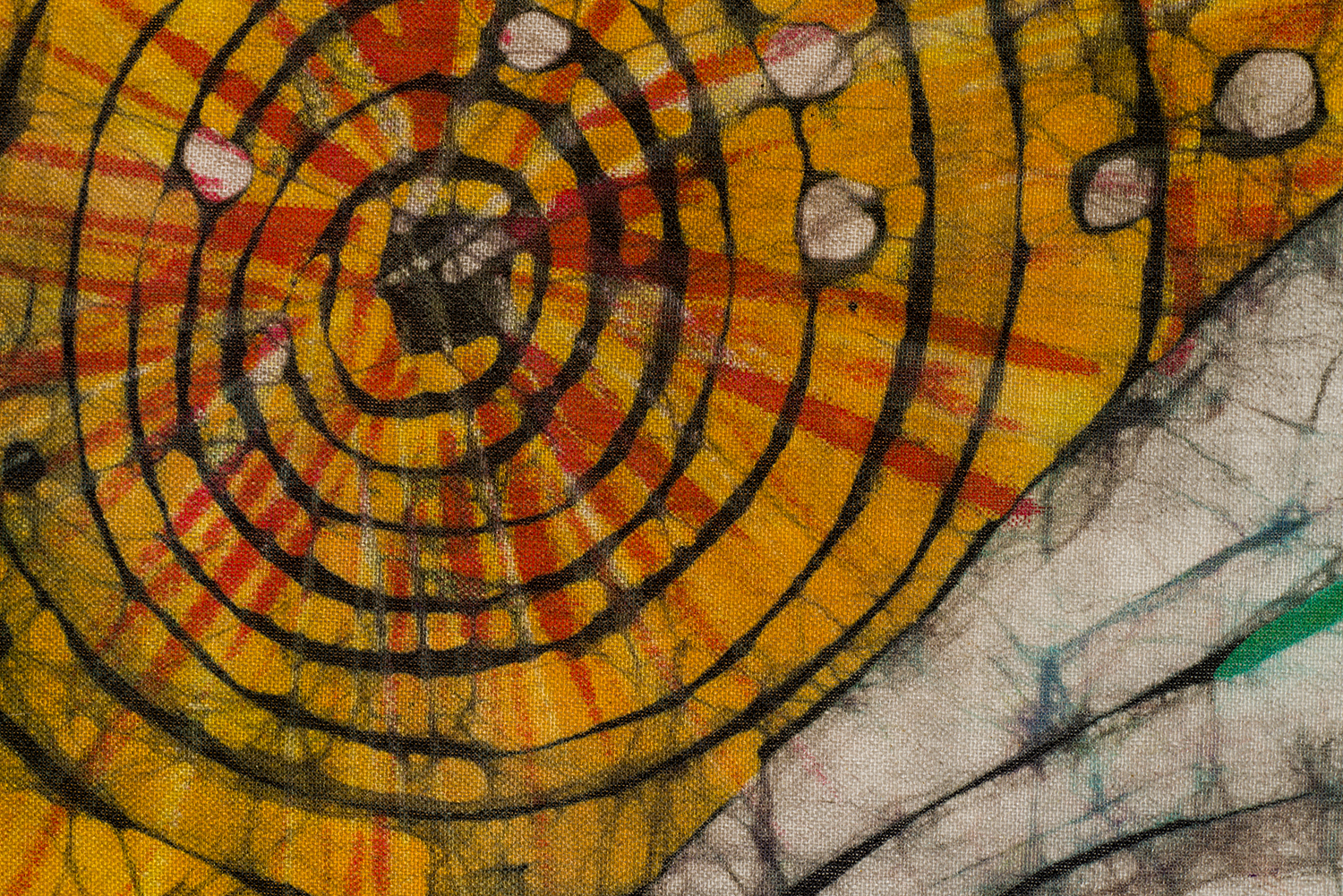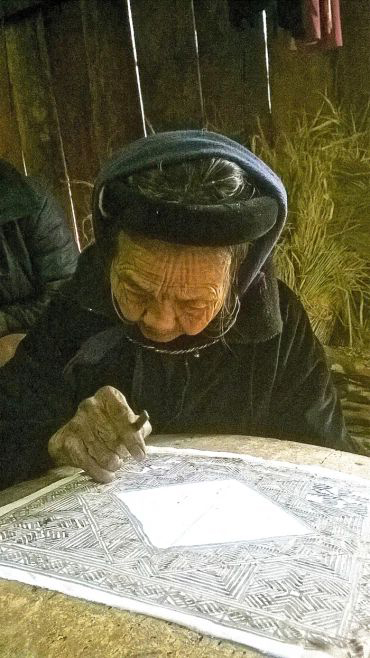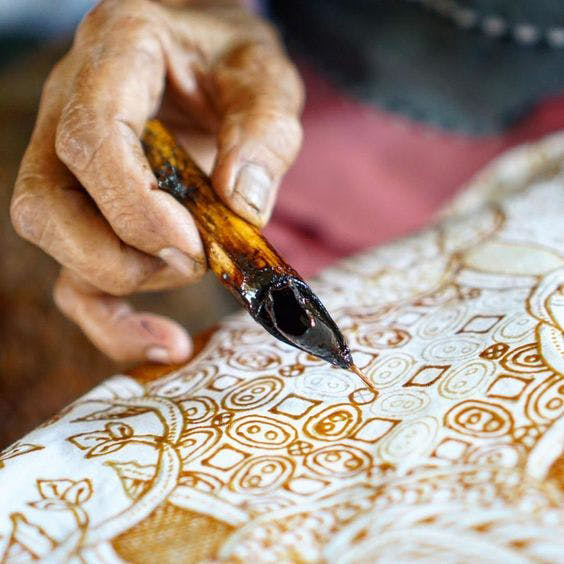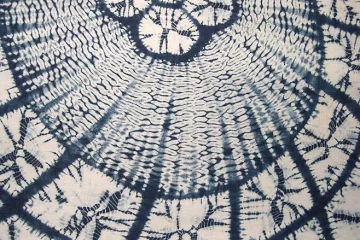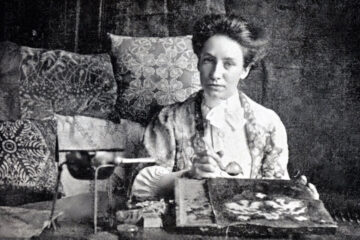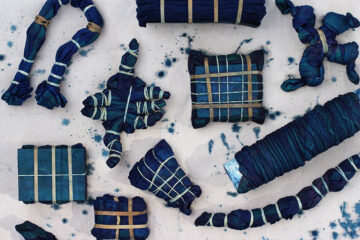Waxed batik techniques, also known as cold batik, differ from other techniques in that they allow you to create different artistic works with pictorial forms. In batik, a fabric dyeing method, the points where patterns are drawn on cotton, silk and other woven fabrics are painted in color order from light to dark. In order to move on to the next stage, the painted area is covered with wax to fix it (so that it is not affected by the next color). You can achieve the desired result with different repetitions of this process. As www.novatelier.com, we have researched the cold batik technique for you.
Waxed Batik Techniques
Cold Batik
Batik art, which is estimated to have originated in the southeast of Asia, has spread all over the world over time and has become a modern art with the addition of new and different techniques. Today, many artists create wonderful designs with batik art. It is estimated that the wax batik method originated in Java in the XIXth century. Dutch artists spread this technique of applying wax to wood to Europe. This technique is not difficult to apply. Wax batik techniques are applied on fabric.
- The fabric is washed, ironed and stretched on the hoop.
- Wax and paraffin heated with the bain-marie melting technique are used in the form of a contour over the pattern with a batik pot.
- After the wax used as a contour freezes, the inner side of the pattern is dyed with the desired colors.
- After dyeing, the entire fabric is covered with wax and paraffin.
- After the frozen fabric is broken in different ways by hand, it must be pressed into the dyed water.
- The wax is removed from the paper (with the help of an iron, newspaper or straw paper).
- Finally, the fabric is washed with gas or gasoline water and used.
Reasons for Using the Candle Technique
Wax allows the artist to show their creativity as it is a very effective dyeing technique. The wax prevents the dye from fully penetrating the fabric. Its most important feature is that it allows empty spaces to be created. This is why wax batik techniques are highly preferred. Wax mixtures do not allow the lines of colors to come out in areas with high resistance. Therefore, it has a unique usage feature. In general, the wax technique is preferred for cotton, silk and natural woven fabrics. Artists who are interested in batik constantly use the bathtub painting process with the wax technique to achieve the best results.
What are Batik Techniques with Beeswax?
Used in many different fields, beeswax is a very important tool for the art of batik. Wax, which is preferred for dyeing different types of fabrics with artistic genius, is used with four different techniques: Scraping, molding, brush, gutta. Let us now give information about these techniques one by one:
- Batik with Engraving and Mold
When engraved batik is made, the fabric must first be stretched on the frame and a mixture of hot wax and paraffin must be applied until a surface large enough to be engraved is formed. The fabric is taken out of the frame and the desired patterns are made by scraping with different materials. The waxed fabric is then dipped in paint. Finally, the wax covering the fabric is removed by ironing or boiling. Since the wax and paraffin create a translucent shine on the fabric, it is placed between two panes of glass and when illuminated, a stained glass-like appearance is achieved.
- Batik with Brush
After the selection of cotton or silk fabric, the subject and pattern drawing to be applied are determined. After the pattern is transferred to the fabric stretched on the hoop, the places that are desired to remain white are covered with a brush dipped in wax. The fabric is removed from the hoop and dipped in the color determined in the next stage. After the dyeing stage, the fabric is stretched on the hoop again and the dyed area is covered with wax with a brush. In the dyeing process, a sequence from light to dark is followed. In the batik technique, close color tones and combinations can be made as well as contrasting color combinations. At the last stage, the wax on the fabric is removed by ironing between straw papers. The difference of this technique from other techniques is that it allows the formation of very fine details and textures.
- Batik with Gutta
The art of batik made with gutta is also known as “silk painting”. In this technique, which is normally worked with a pulley, the basic substance of the dye is gutta. Gutta is obtained by combining gasoline, rubber and paraffin. The material obtained is used for drinking. Gutta reduces the wateriness of the dye. Thin cotton, synthetic silk and pure silk fabrics can be patterned with gutta. The gutta technique, especially on silk, has a special importance among the wax batik techniques. Silk fabrics that are difficult to dye can be dyed easily and easily with the gutta technique.
